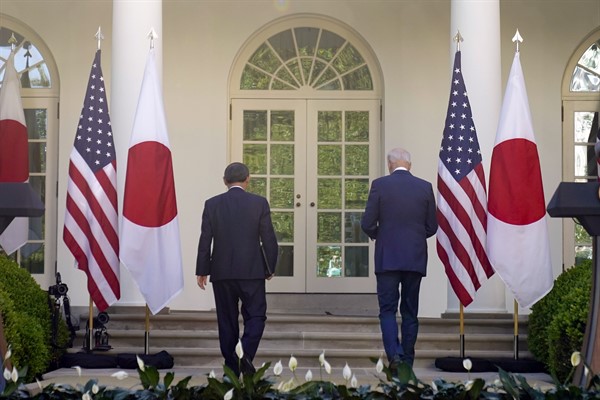In January, U.S. President Joe Biden held a virtual summit with Japanese Prime Minister Fumio Kishida in which both leaders largely agreed to maintain the direction bilateral relations have taken in the 15 months since Biden took office. But if the meeting signaled both sides’ desire for continuity, there are still numerous unanswered questions regarding the future of the alliance.
With Biden’s inauguration as U.S. president, the U.S.-Japan relationship—and U.S. policy on Asia more broadly—appeared set to return to where things stood at the end of the Obama administration. As a candidate, Biden repeatedly stressed that it was urgent to repair the damage done to U.S. alliances by former President Donald Trump and to marshal those alliances to confront urgent challenges. Since taking office, he has subsequently worked to realize a “Rebalance 2.0” through personnel decisions, summits and policy declarations.
However, the region has changed since the Obama administration announced its original rebalance of Washington’s strategic focus to Asia. China’s armed forces are stronger, with the military balance having shifted in Beijing’s favor in the Taiwan Strait, the South China Sea and the East China Sea. Its economic and technological prowess are also enhanced, and its political system is more authoritarian. While the Obama administration sought opportunities for cooperation with Beijing, whether on climate change, economic relations or North Korea’s nuclear weapons, there are now fewer of these opportunities available.

